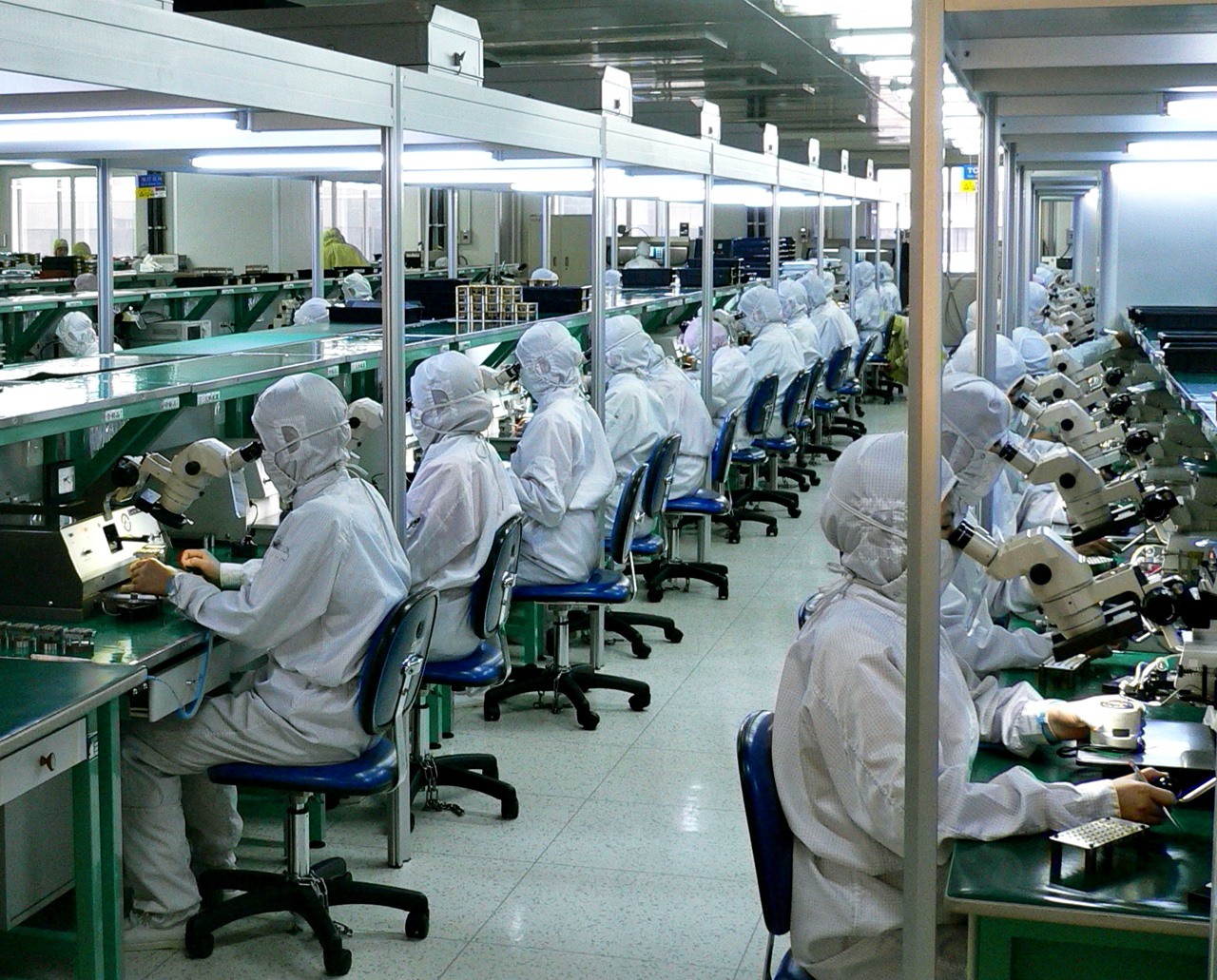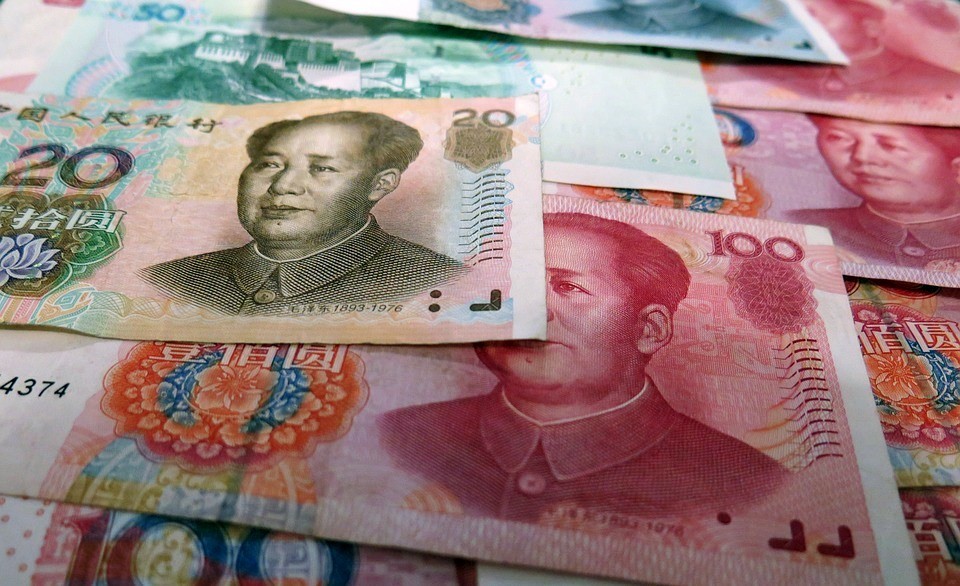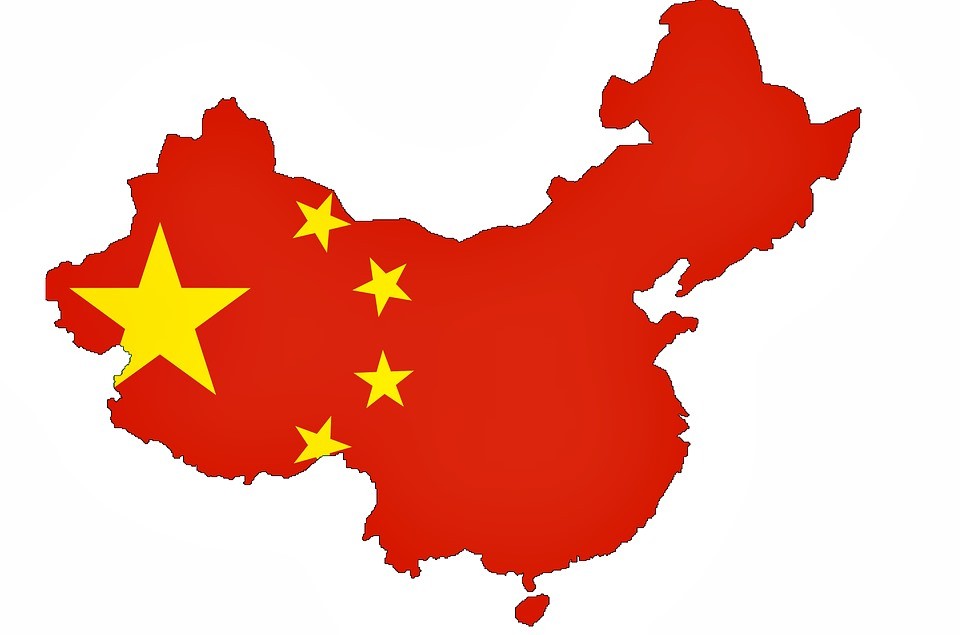Social Media
Brides: Picking Your Fine China

I spent a good part of my life working in ceramics; the major part working with fine china and crystal. A friend of mine suggested that I write an article to help brides choose their china.
It’s funny, but I seldom write about ceramics anymore. I wrote a couple of books on the subject and I was editor of Ceramic Industry Magazine so it’s not that I’m not well practiced in the subject. Writing is always an avocation with me and separate from my profession.
I wrote novels in my spare time. I did write one novel that was centered in a pottery in Lancaster County Pennsylvania. The novel is Bone China. Bone China is a complex detective story where the detective wonders what’s happening to missing people from a small Pennsylvania town. Are they being cremated in an abandoned ceramic factory and being used to make bone china? Nazis? That’s as close as I got to ceramics.
Well let’s get to the point. Let’s cover some of the factors you should consider when selecting your fine china. First, remember that porous china is not covered here. It is called semi-vitreous ware, queen’s ware, and such. Stoneware is not covered either.
Definitions
Bone China
There are several kinds of fine china in which you will be interested. The first is Bone China.
Bone china is made from bone ash. Bone ash is made from the high-temperature calcinations of animal bones. Bone ash is a commodity. That means it comes from a number of different countries and the bones of many types of animals are used.
The bones used to make bone ash come from camels, horses, cows, hogs, llamas, and other critters.
The question here is: Does it matter to you?
If you are Jewish, it might.
I can only say this: When the bones are calcined all organic matter is destroyed. The bone ash becomes exactly like the natural mineral found in phosphate rock. You can’t tell the difference once it is in the ceramic.
I’ve been a consultant to Jewish Rabbis over the year. The consensus has always been that the high temperature purification of the bone ash makes it kosher. If you are concerned about this, talk to your rabbi.
Remember this: The bone ash used to make particular china may not have been made from hog bones. Most large china companies specify that the bone ash not contain hog bones. However, from my experience in the industry, most bone ash suppliers can not always guarantee that some hog bones might creep into their process.
Many Jewish brides have decided that bone china is kosher. I agree with them for one reason, most Rabbis agree with them.
How much bone ash should be in bone china? The classical formula is 50%. If the content is below 47% you might lose one of the most important properties of bone china. Bone china should be white, not off-white to any degree.
Bone ash contributes translucency to the composition. If you put your hand behind a bone china plate, you should see it vividly. The reason is that the refractive index of the phosphate compounds formed is the same as the glass formed in the ceramic. Since they are the same, light is not diffracted.
Just remember this. Bone china should be stark white and translucent. That means that there is very little ball clay in the composition. Fine English kaolin retains the whiteness of the body. Chinastone is a flint / feldspar mixture used by British bone china potteries for the same reason.
Bone china is made by the china process. This means that the body is fired to a high temperature until the body is completely dense or vitreous. This first firing is called the bisk fire or bisque fire. After the bisque fire, the ware is heated, glazed, and fired at a lower temperature. Decorations are applied by decalcomania, hand painting, embossing, etc. More on that later.
Non-bone Fine China
Most manufactures make an Ivory grade of china. Ivory is very popular and also very beautiful if the body is formulated correctly and the body matured completely during bisk firing.
The composition is what we ceramic engineers call “feldspathic.” That means the body contains the mineral feldspar. The concentration of feldspar is high to guarantee that the body will be vitreous. Canadian feldspar (nepheline syenite) is sometimes used to lower bisk firing temperatures.
English kaolin guarantees the desired degree of whiteness and translucency. Only small amounts of ball clay are used. The remaining ingredient is flint. For both fine china and bone china the body must be ground to fineness to develop the desired properties. Glazing and decorating are the same as for bone china.
Porcelain
All of this got started by the Chinese. The word “kaolin” (china clay) was derived from the name of a Chinese province. Maybe the province still exists under the same name for all I know. The classical composition is 50% kaolin, 25% flint (silica), and 25% feldspar.
European Porcelains are popular with brides. Some manufactures have been able to approach the whiteness and translucency of Chinese Porcelain. Note that bone china is the closest match to Chinese Porcelain.
Porcelain is made by the porcelain process. While the china process starts with a high bisk fire, the porcelain process starts with a low bisk fire. The ware is easily grazed because it is porous after bisk firing. No heating is required. The final glost fire is a high-temperature fire in contrast to the low-temperature glost fire in the china process. In the porcelain process, the body and glaze are matured together. This adds strength.
Because of the higher temperatures required to decorate porcelain, the result is not always as desirable as with fine china (often the best decorations) and bone china.
Parian China and Frit Porcelain
Low-temperature porcelains are made are very attractive. These are less popular than bone china, porcelain, and fine china for American brides.
Evaluating Your China or Porcelain
I don’t want to frustrate you with more technical details. Let me just list a few items to consider relating to the desirability and life of your china.
The Foot and Back
When ceramic engineers go out to dinner, the first thing they do is turn the plate over. Why? Well, first they can see who manufactured it. Some fine restaurants use fine china (includes bone china). Most others use Hotel China, an American invention designed specifically for restaurant service. What is suitable for restaurants is probably not suitable for your china cabinet.
Looking at the foot, and I suggest that you look at the foot first, see if it is glazed. If it is unglazed rub your finger carefully and slowly around the foot. Watch for sharp glaze projections as you do this. I don’t want you to cut your pretty finger.
Is the foot rough?
If it is rough, it should be buffed until it is smooth using a buffing stone. An unglazed foot will require that you keep doilies between the plates in your china cabinet so that the foot does not rub the glaze on other plates. You will have to be careful while washing the dishes and while clearing the plates from the table. You don’t want scratches on your glaze, do you?
Most fine china and bone china has an unglazed foot. The foot is polished at the factory before you get it, but make sure you check every piece.
If the foot is glazed, look for pin marks on the under surface of the glaze. Such ware can not be fired on the foot because it will stick to the kiln setters. The pin marks may be hardly noticeable. Some manufacturers set the ware on tiny ceramic spheres rather than on pins. The marks are hardly noticeable. If there are pin marks, make sure they have been polished to remove rough edges.
Look at the manufacturers mark on the bottom of the plate. Is it centered? Can you easily read it? Does it have the name of the pattern? Now decide if you care about such features. Take one last look at the back of the plate. Are there any glaze flaws? Does the glaze application look uniform on the back of the plate? Are there any pits, inclusions, or blemishes? Any rough spots?
The Front of the Plate
Turn the plate over and rub your finger around the rim. Is it as smooth as silk or is it rough? Any thin spots? Look at the surface of the glaze for any pits or impurities. Remember that different manufacturers have different inspection standards. A very small pit might be considered allowable. One manufacturer might have a standard that says no pits except a tiny one on the back of the plate.
Most fine china and bone china manufacturers use lead glazes. The reason is the brilliance of the glaze. Is the lead a health problem? Not under normal circumstances. Most people only use their fine china nine (9) times each year. It could be a problem is you give your child his or her orange juice in a fine china cup every day. Don’t do that.
So, is the glaze brilliant and free of defects?
The Decorations
Although manufacturers have reduced the number of decorating firing by combining functions, traditionally there are three decorating firings. The first decorating firing is called the “decal fire” and that is when decals are placed according to design. Decals come as screen printed or lithographic. The color in screen printed decals is thicker and often more intense than in lithographic decals.
The enamel or heavy color is placed next in the “enamel fire.” Now days, enamel may be placed on the decal and combined in a single firing.
The last firing is the “precious metal” firing or “geld firing.” Gold or platinum is applied to the rim and certain areas of the design. This too is sometimes applied to the decal and omits all but one firing.
Here are some decoration considerations. Are the decorations positioned properly on the plate? Rub your finger over them. Are they sitting on top of the glaze or are they buried deep into it? Decals should sink into the glaze so that they do not wear off. They should not sink so far that they are no longer attractive. Hard gold is gold that will not buff that has sunk too far into the glaze. Soft gold is gold that is sitting on top of the glaze and is easily rubbed off. Watch for soft gold on porcelain. The glaze is very hard and it is hard to get decorations and precious metal to sink into the glaze. (“Hard” in this sense means not very fusible during deco fire.)
Service Problems for Fine China
Fine china faces your eating utensils, your dish washer, and storage.
Yes, fine china can be damaged in your china cabinet if the foot of one plate rubs on the surface of another plate which scratches the glaze. Once scratched, it is scratched. Glaze hardness is highest in high-temperature porcelain and lowest in low-glost-fire fine china. Bone china is in between. Bone china is a good choice for beauty and durability.
Knife marking is the worst from the utensils. The marks can actually be cuts in the glaze and can’t be removed. They also can be metal rubbed from utensils which can often be removed by SoftScrub®. Here, I suggest that you do not use extremely hard steak knives in fine china service.
Cups and Other Shapes
Look at the handles of the cups. I said, “cups,” not “cup.” You must look at several to tell the quality.
If the cup handle is formed with the cup by slip casting, it should look perfect.
If the cup handle is stuck to the cup after the main body of the cup is formed, it may not be perfect. Stuck handles sometimes fall off in service. This is a manufacturer’s nightmare.
The problem is that a plastic formed handle does not “fit well” (during shrinkage) on a plastic formed cup.
There is not as much of a problem with cast handles being placed on a plastic formed cup. (The problem is technical and I’ll not explain it here. E-mail me if you really want to know.)
Look at the join where the handle meets the cup. Does it look neat and clean? Is there excessive glaze buildup where they join? You don’t want anything ugly do you?
Check the bowls and see if they will stack. If they will not stack, I have a suggestion: run! (Well, if you can put up with the bowls not stacking and you just love the design, go ahead and buy them.)
Teapots should have their handles checked as with cups. Check the knobs on the lids of teapots and casseroles. Do you think they will stay on? Are they attractively applied?
The Guarantee
Read the guarantee carefully. (Well, have someone read it.) Ask how long replacement for your pattern is guaranteed. You don’t want to have to go to Replacements Inc. (http://www.replacements.com/index.htm?s1=kx&896&), if you don’t have to.
Yes, you can e-mail me with questions.
Oh! Congratulations!
The End
Bride, china, how to choose china, bone china, porcelain, china care, china defects, fine china, parian, frit porcelain, processing, storage
Social Media
The Phantom Growth of China's Ghost Cities

Bloomberg has a new video series out called "China's Ghost Cities."
The reporter, Adam Johnson, describes how the Chinese government is building massive cities that no one lives in yet. The expectation is that China is going to "grow" into these cities.
A remarkable idea, really. The authoritarian planners in Beijing or where decide it would be good if, say, a million people or more could relocate to a pre-planned area.
Then they build out the infrastructure – or rather the entire metropolis, skyscrapers, stops and all – and wait.
Stop for a moment and ponder how nutty this is. The last time your editor checked, central planning was not a huge success. According to history, bureaucrats wielding directives over long distances tend to allocate resources poorly.
But are ghost cities a recipe for a bust? Some say no. The Bloomberg reporter, for instance, assures us that China's economies are different – that is to say, "it's different this time." (Where have we heard that before …)
It is supposedly OK that these ghost cities, built for millions of refugees, have only tens of thousands of people living in them – because all that deserted square footage will eventually be put to good use.
As a bonus, building ghost cities is great for economic growth.
Via running superhighways out to the middle of nowhere, erecting steel and glass towers in the boondocks, China generates new jobs in construction, civil engineering, city planning and the like. All this construction looks fabulous on paper. The ghostly infrastructure gets counted as productive output, and the super-aggressive GDP target is maintained.
But what is wrong with that picture?
For one, there is the central planning problem. Growth and development are free market forces, with signature marks of trial and error. Successful cities are built from the ground up, not decreed by bureaucrat stamp. So how does the government know where a new metropolis should go, or what its optimal size should be?
Then you have the accounting problems. Should the promise of tomorrow be so read reflected on balance sheets today?
Imagine if a public corporation said, "We are going to grow 20% per year by building idle factories in the middle of nowhere, that no one is going to use for quite some time. will show up. We'll make a profit on them ever. Just do not ask when. "
Such a plan would be brutalized by the market, because public companies are held accountable for profits and return on investment (ROI). (At least most of the time – in bubble times investors will happily suspend their rational faculties.)
The Chinese government, of course, does not have to seek profit in its actions. Or it can measure results in some entirely non-traditional way, via "how many jobs did we create" or "how do the GDP numbers look."
At the end of the day, the "ghost city" mandate is directly channeling John Maynard Keynes, who once suggested digging holes, then filling them up again as a way to put men to work.
China is being more sophisticated. Rather than digging holes, it is putting up buildings. The effect is the same though. "Some day" the empty skyscrapers will have value – if they are not condemned as worn-out structures first – but until then they are just holes.
China bulls are not bothered by the ghost cities for at least three reasons.
First, they have convinced themselves (with more than a bit of faith) that the empty metropoli will one day (sooner rather than later) be full.
Second, they figure China has a lot of money to burn even if the ghost cities do not work out.
And third, as the old saying goes, "a rolling loan growers no loss." As long as the specialized music is playing, the property developers can keep dancing.
The trouble, as always, comes when the music stops. If China turns out to have built, say, 20 years of excess capacity by the time that happens, then hundreds of billions' worth of stagnant projects will have to be written off.
Tougher still is the idea that China's "economic miracle" is actually a heavily leveraged bet on mercantilism … propped up by runaway construction … with the tail end of the boom pushed recklessly from pie-in-the-sky projections for future growth.
That is another favorite tactic of investment manias: Along with the empire of forever skyward growth curves, mortgaging tomorrow (and borrowing against it) for the sake of today.
Even if China can write checks to cover the write-off costs of all those cities, there is a big multiple built in to the global economy right now on the assumption that China growth is the real deal. When it sinks in that much of growth is actually "ghost" or "phantom" growth – in keeping with these empty monuments to now – the collapse of that multiple could hurt.
Social Media
The Chinese Water Lantern Festival

The Chinese have designed and crafted lanterns that can float in water and glide in the air. Though sky lanterns were initially crafted as a device, to send signals, today they are used as decorative articles. Water Lanterns in Chinese festivals have its own importance.
There is an interesting story to the History of Chinese lanterns. It was believed that these lanterns, both the sky lanterns and the Water lanterns used in Chinese festivals were initially created out of necessity rather than artifacts for decorations. The Chinese have a history of inventing several new things and also leading the way in several new technologies. But, initially, the Chinese did not have access to or the knowhow to make a vital building material – Glass. Hence they did not have glass lanterns or glass windows. On the other hand, they had the skill of making paper. The paper industry in china was so advanced that it could produce paper that was very thin, to let light pass through it. They could also add beautiful colors and embellishments to the paper. Thus was born, the world’s first source of portable light – the lantern.
These lanterns were then gradually adapted to float in water and glide in the sky. Such was the skill of the Chinese craftsmen that these lanterns were used for lighting public places, homes and even battlefields. There is a story of a military strategist Zhuge Liang, having used paper lanterns to help the army march by night and attack by the day.
Over time, this battlefield beacon turned into an epitome of hope and wellbeing and festivity. The origin of the Lantern festival can be dated back to the Han Dynasty. During this time, the city is decorated with lanterns that are beautifully crafted in different shapes and sizes and then displayed with wishes or riddles written on them.
Water lanterns in Chinese festivals like the Moon Festival are a major tourist attraction. People from all over the world come to witness this event. On this day children and adults make or buy Water lanterns and write wishes on them. They then set these lanterns afloat in the water under the moonlight and watch them float away.
Water Lanterns in Chinese Festivals alongside other lanterns are used to light up the way to guide the spirit of their ancestors to come and bless them. Even today this tradition is followed, and people decorate their homes and public places to welcome their ancestors.
Health
Keemun Black Tea From China – Caffeine Content, Health Benefits, And Other Properties

Keemun is a type of Chinese black tea, originating in Qimen county of Anhui Province, China. This article gives an overview of the caffeine content, health benefits, and other properties of Keemun.
Keemun is primarily produced in Anhui province, but teas in this style have also begun to be produced in nearby Hubei, as well as in Jiangxi, and even in Taiwan. Keemun is usually described as having an earthy aroma, and its overall character is quite different from Indian and Ceylon teas. My personal perspective is that Keemun has a richer, warmer quality, often reminiscent of dried fruit, and in higher grades, a pleasing hint of wood or wood smoke. These teas are rich and full-bodied, and are among my favorite black teas.
Caffeine content:
Although you may be looking for more concrete information, it is hard to generalize about the caffeine content of Keemun. Even though it originates primarily in one region and shares certain aspects of production, Keemun is fairly diverse, coming in different grades. As a general rule though, Keemun is often in the moderate to high end of caffeine content, among teas, which means that it still has considerably less caffeine than a typical cup of coffee. Keemun has historically been used in breakfast blends, where strongly caffeinated teas were desired
Health benefits:
Keemun has actually been the subject of direct scientific study., in association with weight loss in animal studies. There is only a small amount of research referring specifically to this variety of tea, however, so most of what can be said about Keemun must be inferred from general studies about black tea.
Although green tea has a stronger association with supposed “health benefits” in the public consciousness in the United States, this association may be skewed by historical factors. Much of the early research on tea and health was conducted in Japan, where tea is synonymous with green tea. Subsequent research has found substantial evidence that black tea is healthy as well. In the absence of more reserach specifically looking at Keemun, it seems reasonable to conclude that Keemun is likely to have a similar amonut of health benefits to black tea.
Locating high-quality Keemun:
My recommendation, if you want to buy the best Keemun, is to buy exclusively loose-leaf. My experience is that the best Keemun is usually sold by companies that specialize in Chinese tea. Because they store relatively well, Chinese black teas, even those of considerably high quality, tend to be relatively inexpensive, with all but the highest grades (Keemun Hao Ya A and B, and Keemun Mao Feng) costing well under $10 for about 1/4 pound or about 100-125 grams. A few companies, including Rishi Tea, Arbor Teas, and Little Red Cup, sell fair trade certified Keemun, produced in Hubei, Anhui, and Jiangxi provinces, respectively.












